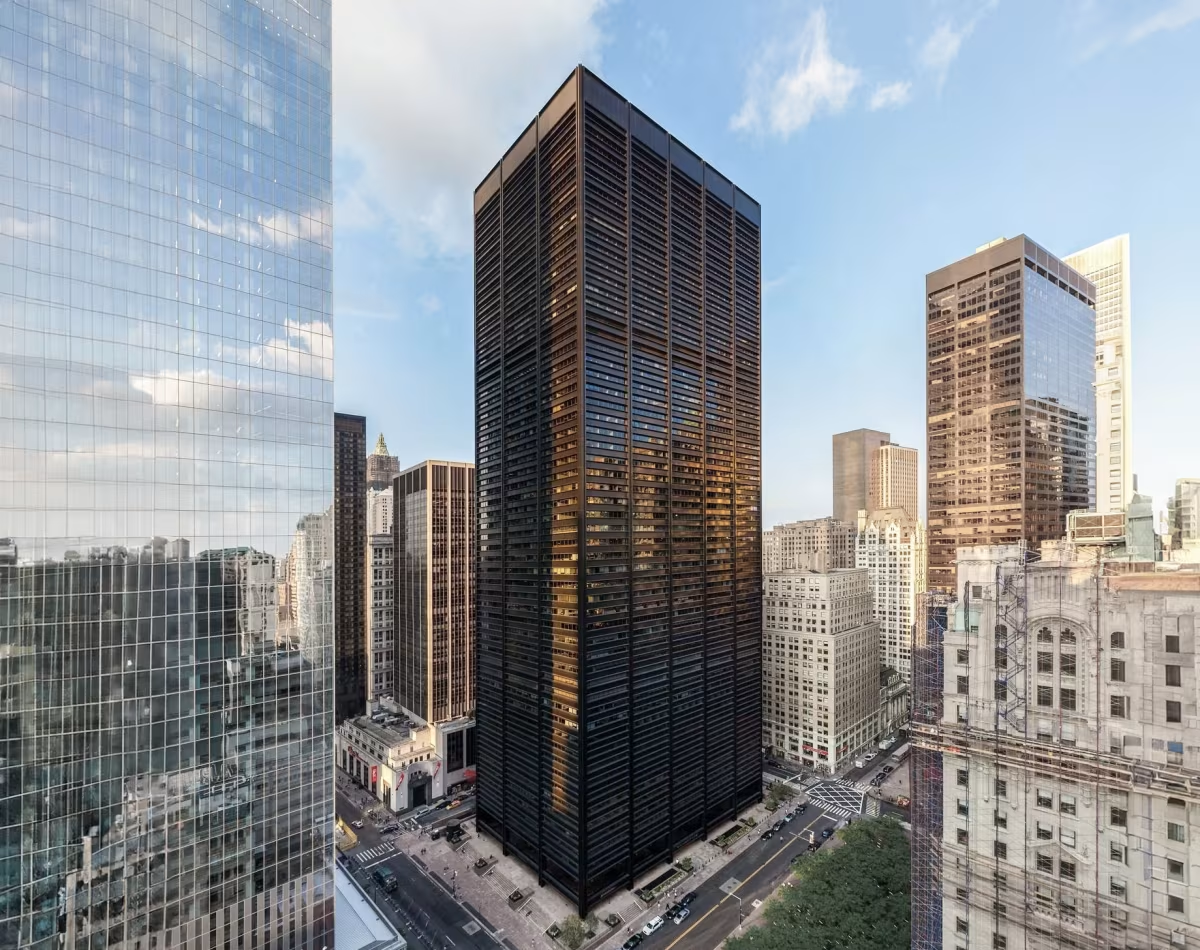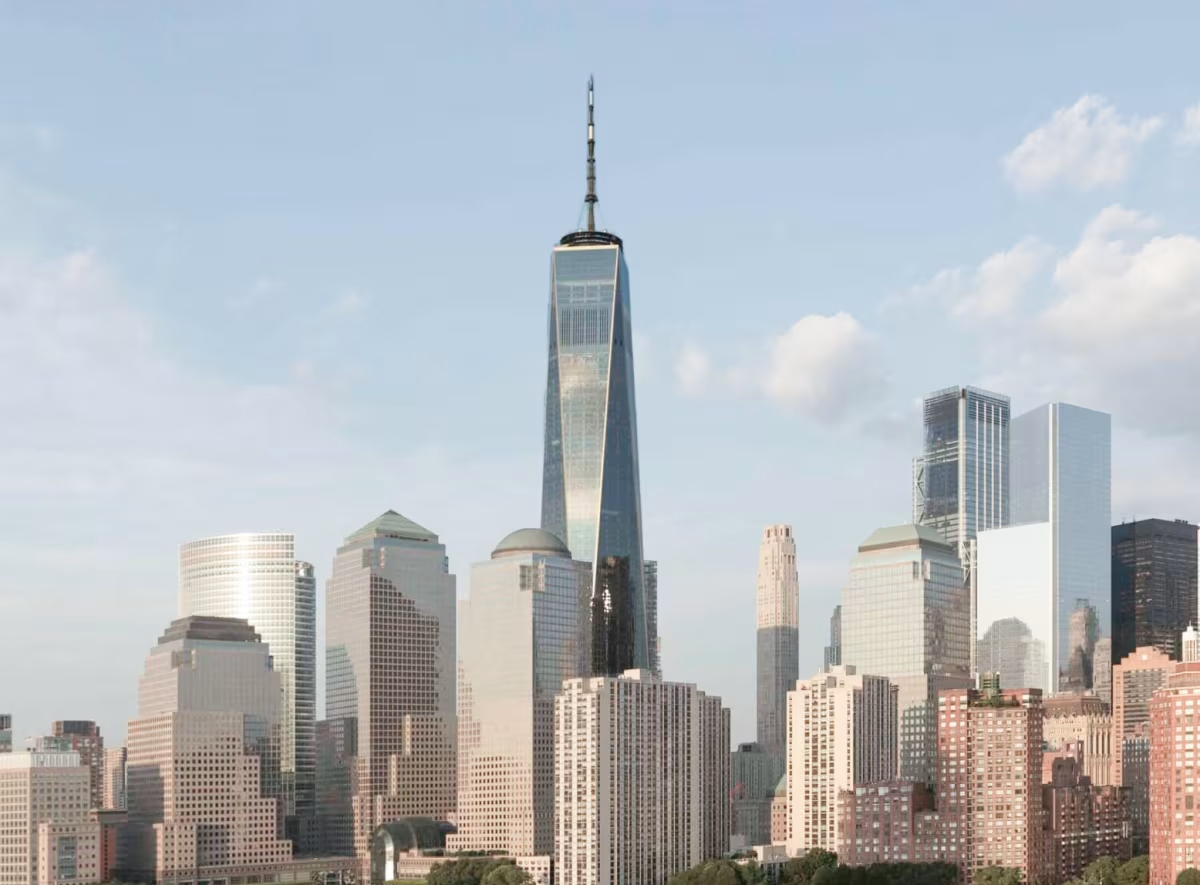One Liberty Plaza Building vs One World Trade Center


Comparing the One Liberty Plaza Building and the One World Trade Center is particularly interesting because they share the same skyline in New York, NY, and were both designed by Skidmore, Owings & Merrill. However, they were completed more than 42 years apart.
This offers a unique perspective on how the architect's style and the city's architecture evolved over time.
Height & Size
The One World Trade Center is clearly the larger tower of the two, both in terms of height and number of floors. It rises to 1775ft (541m) with 104 floors above ground, while the One Liberty Plaza Building reaches 741ft (226m) with 54 floors above ground.
Of course, each project may have faced different briefs or regulatory constraints, which we don't really know about and could also explain the outcome.
Architectural Style
The One Liberty Plaza Building was designed in the International Style style, while the One World Trade Center reflects the principles of Contemporary.
The One Liberty Plaza Building represents a late expression of the International Style, a style already in decline in 1972 when it was completed. By contrast, the One World Trade Center followed the then mainstream Contemporary, embodying the dominant architectural direction of its time.
With 42 years between them, the comparison also reflects how quickly architectural priorities can shift from one dominant language to another.
Uses
Both the One Liberty Plaza Building and the One World Trade Center were designed to serve as commercial towers, and that has remained their main use since their completion, serving similar roles in the urban fabric.
Structure & Facade
The two towers rely on different structural systems, reflecting distinct engineering strategies.
The One Liberty Plaza Building uses a Frame structural system, which relies on a regular grid of columns and beams to sustain its weight, while the One World Trade Center uses a Framed Tube In Tube system, that combines a strong central core with a perimeter tube of columns.
Yet, when it comes to their facade, they both employed the same solution, a Curtain Wall facade.
A curtain wall is a non-load-bearing facade hung from the structural frame. It is anchored to floor slabs and transfers only its own weight and wind loads, allowing for sleek, glassy exteriors.
| One Liberty Plaza Building | One World Trade Center | |
|---|---|---|
| Skidmore, Owings & Merrill | Architect | Skidmore, Owings & Merrill |
| 1969 | Construction Started | 2006 |
| 1972 | Year Completed | 2014 |
| International Style | Architectural Style | Contemporary |
| Commercial | Current Use | Commercial |
| 54 | Floors Above Ground | 104 |
| 3 | Floors Below Ground | 5 |
| 214 | Last Floor Height | 386 |
| 226 m | Height (m) | 541 m |
| 39 | Number of Elevators | 73 |
| Frame | Structure Type | Framed Tube In Tube |
| Steel | Vertical Structure Material | Steel |
| Concrete And Steel | Horizontal Structure Material | Poured Concrete Over Metal Decking |
| Yes | Facade Structural? | No |
| Glass, Steel | Main Facade Material | Glass, Steel |
| Turner Construction Company | Main Contractor | Tishman Construction |
| U.S. Steel Corporation | Developer | Port Authority Of New York And New Jersey |
| Otis Elevator Company | Elevator Company | Thyssenkrupp |
| SYSKA Hennessy Group | MEP Engineer | Jaros Baum & Bolles |
| Weidlinger Associates | Structural Engineer | WSP Group |
| NY | State | NY |
| New York | City | New York |
| 165 Broadway | Address | 285 Fulton Street |